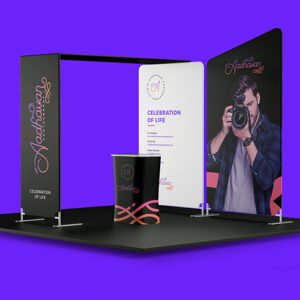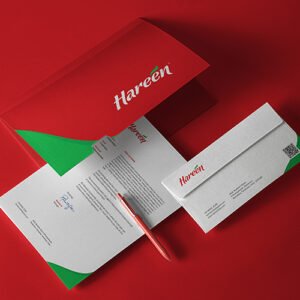Creating a standout portfolio is essential for showcasing your graphic design skills and attracting potential clients or employers. Here are some tips to help you create an impressive graphic design portfolio:
Select Your Best Work:
Choose a selection of your strongest and most diverse design projects to include in your portfolio. Highlight a variety of design skills, such as branding, print design, web design, illustration, or any other areas you specialize in. Focus on quality over quantity and aim for a cohesive and well-rounded representation of your abilities.
Show the Design Process:
Include examples that showcase your design process, from initial sketches to the final product. This demonstrates your creative thinking, problem-solving skills, and attention to detail. Clients and employers appreciate seeing the journey from concept to completion.
Organize and Present Professionally:
Structure your portfolio in a logical and easy-to-navigate manner. Use clear sections or categories to group similar projects. Consider creating a visually appealing and user-friendly online portfolio using a website or portfolio platform. Ensure that your portfolio is responsive and accessible across different devices.
Craft Engaging Case Studies:
Accompany each project with a case study that provides context, explains the design challenge, and outlines your design solutions. Include information about your role in the project, client objectives, and any notable results or impact achieved. Use visuals, such as sketches, mockups, and process images, to illustrate the project’s evolution.
Highlight Strong Visuals:
Showcase your design skills with high-quality visuals that accurately represent your work. Include high-resolution images of your designs, displaying different angles, variations, or applications of the project. Pay attention to aesthetics and ensure that the visuals in your portfolio are visually appealing and well-presented.
Demonstrate Versatility:
Emphasize your ability to adapt and work on a variety of projects. Include diverse examples that demonstrate your range of styles, techniques, and design applications. This shows potential clients and employers that you can handle different design challenges and bring a fresh perspective to each project.
Include Client Testimonials or Feedback:
If possible, include testimonials or feedback from clients or collaborators to provide additional credibility and validation. Positive testimonials can build trust and reinforce your professional reputation.
Keep it Updated:
Regularly update your portfolio with your latest and most relevant work. Remove outdated or weaker pieces to maintain a strong and current representation of your skills. Your portfolio should reflect your growth as a designer and showcase your most recent accomplishments.
Seek Feedback and Iterate:
Share your portfolio with trusted peers, mentors, or other industry professionals and ask for constructive feedback. Use this feedback to refine and improve your portfolio over time. Continuous iteration and improvement will help you present your work in the best possible way.
Remember to tailor your portfolio to your target audience. Customize your selection and presentation to align with the specific interests and needs of potential clients or employers. By showcasing your best work, presenting it professionally, and highlighting your unique design process and skills, you can create a standout graphic design portfolio that effectively showcases your abilities and attracts opportunities.








